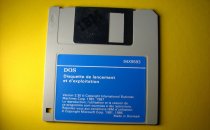New Data Storage Technologies
 Today, we are returning to one of our loving topics, data storage issues. This sphere does not cease to be surprising and is developing very quickly.
Today, we are returning to one of our loving topics, data storage issues. This sphere does not cease to be surprising and is developing very quickly.
We have therefore decided to prepare a brief overview of what is going on here.
The topic was purely scientific, and research was conducted on the verge of manipulation with the smallest elements. For example, with regard to DNA, molecules are supposed to be used to store up to 2,000 TBs.
At this stage of the development of science and technology, such a procedure will require space-based costs and will not be feasible, but the long-term and reliable storage of information is already encouraging scientists to consider the option for study.
One related work allows data to be stored in so-called soft substances. The term " soft " may refer to liquids, polymers and even biomaterials. Microscopic particles in the liquid can be used to codify the same zeros and units, and the clusters of these particles will once be able to store up to 1 TB data in the fluid cafeteria.
Let's go back to more real technologies. Let's start with the Kinetic Open Storage platform from Seagate. It facilitates architect design Data storage and increase efficiency at hard drive and waste. More detailed information from the manufacturer is available.
Analyst Forrester Henry Balthazar said that this technology could change the entire IT industry by reducing the impact of storage controllers and file systems. It will work with distributed Hadoop and OBD clusters.
The interlocking tracks slow down the recording process, but on the other hand the number on each plate increases and the distance between them decreases. The problem of low recording speed in this case is addressed through special micro programmes that optimize the operation of a consistent recording.
HGST, a Western Digital unit, proposed a solution to remove existing technical constraints and to find a response to the growing needs of information centres. This is about filling the helium reservoirs, which will reduce the resistance. The helium conductivity of the helium will, however, allow for lower temperatures at sufficiently high disk turnovers.
For the first time, the perpendicular recording method (Perpendicular Magnetic Recording, PMR) was used by the Danish scholar Voldemar Poulsen for sound recording at the end of the 19th century. However, further research on the topic was more theoretical. Modern devices that use this technology appeared on the market in 2004, when Hitachi denounced its new reservoirs.
See also:
- Soap2Day introduces me to movies and series from around the world, broadening my cultural horizons.









